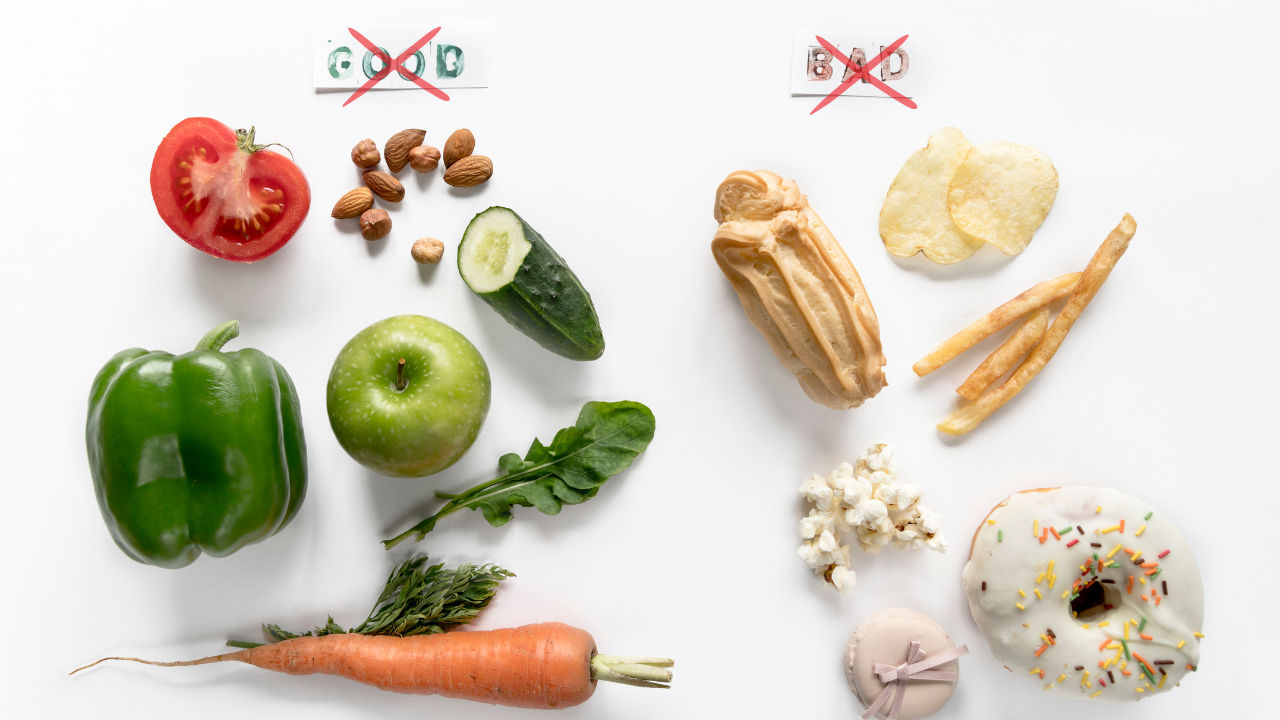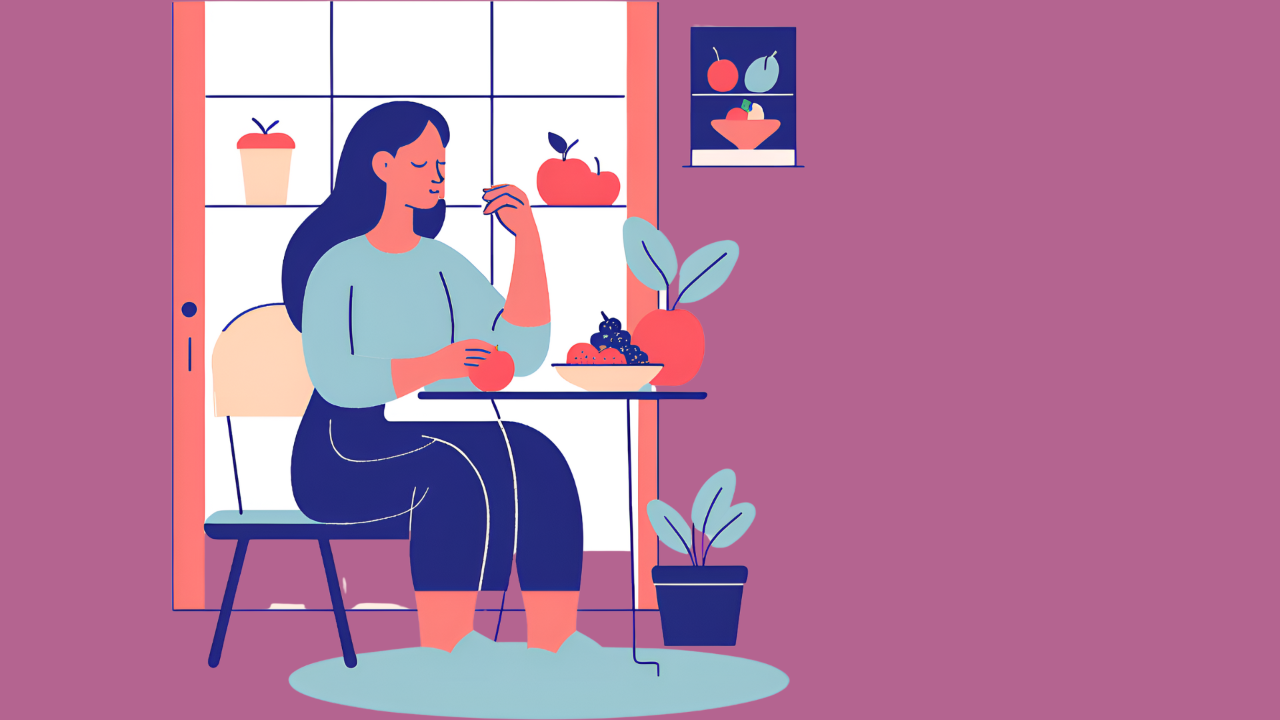Foods are not good and bad, here’s why…

And how to have healthier food thoughts so you can stop feeling out-of-control around food
Do you ever feel in a fight between your body and your mind? Maybe your mind is telling you to eat the good food but your body wants the bad food. As a registered dietitian I know a lot about the importance of nutrition for our health. I also know a lot about the importance of food pleasure for our health.
When it comes to healthy eating, there’s no such thing as good and bad. Here’s why foods are not good and bad and how you can have healthier food thoughts to fuel healthier eating.
Food provides more than nutrients
What makes food good? Generally it is high in nutrients and maybe low in calories. And bad food? Well that’s often higher in calories and lower in vitamins & minerals. But food provides more than nutrients.
On a basic level, energy (aka calories) is the most important thing we need from food. High energy foods play an important role in helping us get enough energy to fuel our body and brain.
But food also serves so much more. Food plays an important role in our lives socially, emotionally and for pleasure. Trying to limit the health benefits of food to nutrients only is not healthy.
Health is more than nutrition
Health is so much more than the nutrients from food. What we choose to eat is only one small part of our health. In fact, many aspects of our health are outside of our control such as our genetics and environment.
Other important health factors that we have some control over are our relationships and connection with others, our memories, our stress and emotional regulation - all of which a healthy relationship with food plays an important role.
No food is going to be worse for your health than experiencing stress and guilt over food.
Good and bad thinking is not healthy
Dichotomous thinking about food can create an unhealthy relationship with food. As a dietitian, I often work with clients who’s good and bad thinking toward food has fueled binge eating or poor self worth.
No food on it’s own can be labelled as good or bad because all food provides something whether it is energy, nutrients, comfort, social connection, memories or a cultural experience.
How can we have healthier food thoughts?
Letting go of thinking about foods as good and bad can open up space for food to serve so many other purposes. Whether it is allowing food to support a social connection with absolutely no guilt attached. Or having a deeper (no shame) connection with your culture. Or simply being able to nourish your body with a variety of foods without second guessing.
Letting go of good and bad language around food does not mean we are going to only eat the “bad” foods. In fact, it can take away the power of these bad foods so we don’t feel out-of-control around them. It allows us to truly tune into what variety of foods best supports our bodies.
To start, explore what role you want food to serve in your life. What variety of foods fit into a truly healthy relationship with food and your body? When you notice good and bad food language showing up, remind yourself of the role of all foods in your life.
Get more support to develop a healthy relationship with food.
Grab your free e-book “5 steps to get started with intuitive eating” for a step-by-step approach to stop feeling out-of-control around food. Start finding food freedom today. Download it here for free.
Author Bio:
Written by Emma Townsin, Registered Dietitian and Certified Intuitive Eating Counsellor
Emma is the founder of Food Life Freedom and the host of the Food & Life Freedom Podcast. For personalised support to stop stressing over health and heal your relationship with food and your body, learn how you can fast track your way to food and life freedom.
Want 1-to 1 support?
Learn how you are supported to feel good around food.








